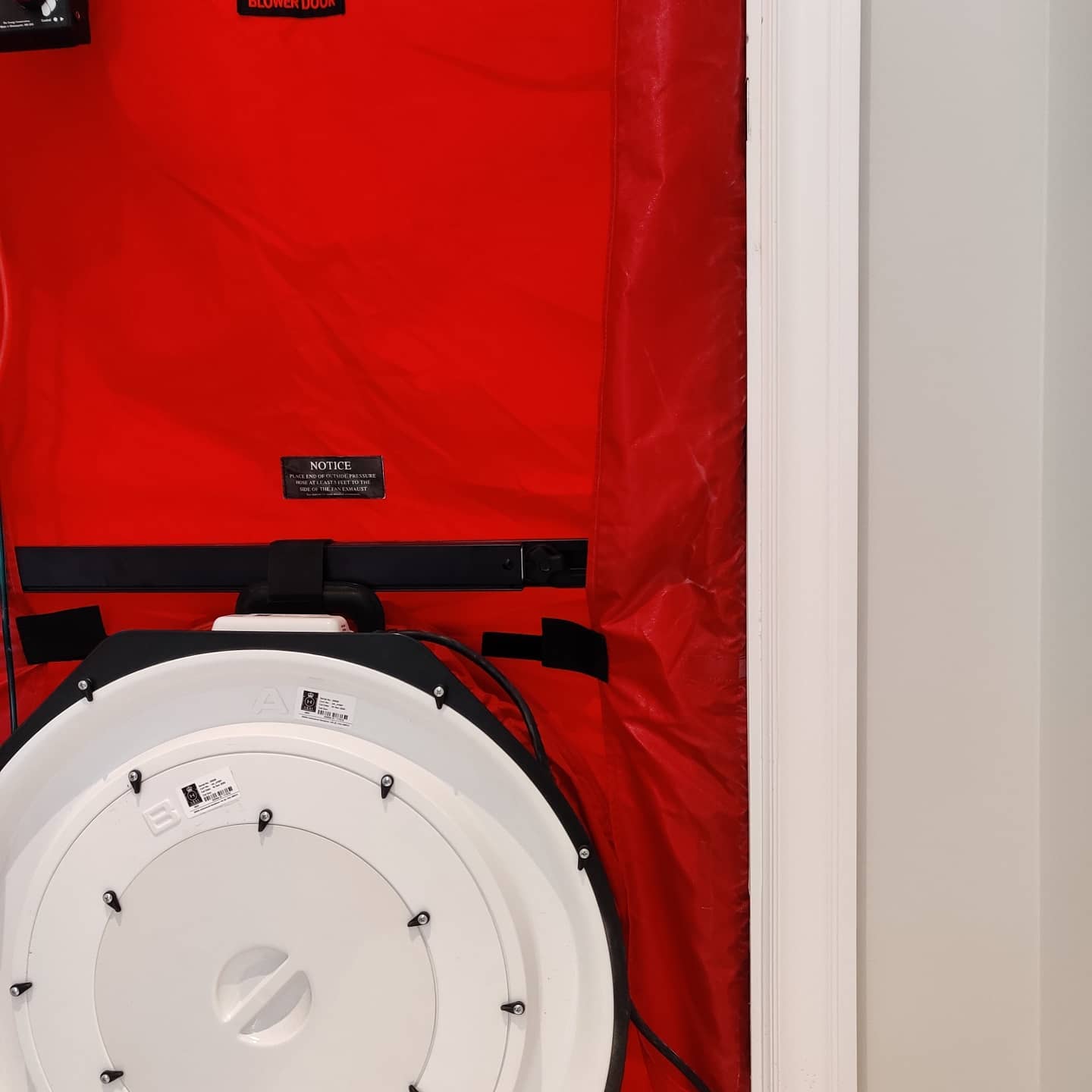
Air Infiltration Testing
Building Compliance Testing Limited can provide you with a fast and cost effective ATTMA Accredited Air Infiltration Testing across Mainland UK, in accordance with BS EN ISO 9972:2015 and CIBSE TM23.
 Air Infiltration Testing
Air Infiltration Testing
Also known as air leakage testing, air tightness testing or air permeability testing, is a test required by the Part L of the Building Regulations as part of an overall energy performance assessment of a building. Air leakage is calculated as cubic metres of air leakage per hour per square metre at 50 Pascals (or 4Pa for Pulse Testing). But what does this actually mean?
Air leakage can occur through gaps and cracks in the fabric of the building envelope, allowing conditioned (heated or cooled) air to escape, which consequently driving up heating/ cooling bills and contributing to potentially to carbon dioxide emissions, in the form of mains gas or non-renewable electricity sources.
Typically the test takes between twenty minutes to a couple of hours. This all depends of the size of the building, the test locations, the ability to create stable pressure in the building and unfortunately the controllable influence of the British weather.
Typically a test is carried out by a single engineer using a UKAS calibrated blower door system. The system is essentially a fan mounted within a canvas, that’s installed within an external door or window, controlled by a fan speed controller, and a number of tubes connected to a multi-channel manometer, which is read and inputted into a software to generate a result.
During this time other trades can remain within the building so long as the external envelope remains closed (external doors and windows) and internal doors open.
The Standards
In Approved Document Part L1 of the Building Regulations, the process of assessing a building’s air tightness is commonly referred to as Pressure Testing. This methodology, as defined in ATTMA Technical Standard 1, is based on internationally recognized standards like BS EN Standard 13829:2001 and ISO 9972:2015. For new dwellings, as stipulated in Approved Document L1, airtightness tests are mandatory for any new build dwelling or development comprising two or more dwellings/flats, with the number of tests contingent on the development’s size and layout. Compliance with Part L1A necessitates that any tested dwelling achieves an air pressure test result (or air permeability) of 10m³/h/m² or less at a pressure differential of 50 pascals. Similarly, under Approved Document L2, which pertains to new non-dwelling buildings, air permeability tests are also required for new build premises other than dwellings, with the quantity of tests contingent on the development’s size and configuration.
The Equipment
As expected, the equipment used for Air Infiltration Testing is highly specialized and demands frequent and rigorous calibration to ensure precision. All equipment from Building Compliance Testing is calibrated by a UKAS approved laboratory to guarantee accuracy during on-site tests. Building Compliance Testing is registered with ATTMA, subject to regular audits to uphold high standards and accuracy. If you’re uncertain about whether your development necessitates an Air Permeability Test, Building Compliance Testing can provide guidance. We also offer complimentary, no-obligation quotes at highly competitive rates for projects of all sizes.
Let’s Talk About Your Project
Just give us a call on 01621 493594 , or email us at contact@buildingcompliancetesting.com
Whether your requirements is for a domestic retrofit, residential or commercial development, to eco-build passivhaus testing, Building Compliance Testing can support you from concept to completion by offering a one-stop-service service:
design reviews – site inspections – pretesting – smoke diagnostics – site management training and education
Other Services
– Part L Compliance
– Smoke Shaft Testing for Automatic Opening Ventilation (AOV)
– Multi-fan Commercial Testing
– Existing Buildings Testing
– Air Tightness Design Reviews
– Plenum and Raised Access Testing (RAF) to BG65 Standards
– Air Sealing in preparation for Air Tightness Testing
Summary
Air infiltration testing, a requirement under Part L of the Building Regulations, assesses a building’s energy performance by measuring the volume of air escaping per hour per square meter at a specific pressure level (usually 50 Pascals). This test helps identify gaps and cracks in the building envelope, through which conditioned air can escape, leading to increased heating or cooling costs and potential carbon dioxide emissions. Conducted using a calibrated blower door system, the test takes approximately twenty minutes to a few hours and involves a fan, manometer, and software to determine results. Building Compliance Testing offers a comprehensive service, including design reviews, site inspections, and training, alongside other services such as smoke testing, air tightness design reviews, and Passivhaus testing, to ensure compliance and energy efficiency in various building types.
 Air Testing Frequently Asked Questions
Air Testing Frequently Asked Questions
Questions? We’ve Got Answers!
Find below a list of common frequently asked questions about Air Infiltration Testing.
What is required for an Air Tightness Test?
- Floor Plans and Section Drawings
- Site Address and Contact
- A copy of the Design-stage SAP report for dwellings
- A copy of the Design-stage BRUKL report for buildings other than dwellings i.e retail units
When do I know when I am ready for an Air Tightness Test?
- We will carry out the air tightness test once the unit is past the second fix stage and the following
elements within the unit are completed: - All walls are finished, including cladding, windows and doors.
- Skirting boards are fitted and sealed around
- Sockets and lights are fitted and completed, in some cases caulked around (mention potty pads)
- All plumbing work is completed and gaps or holes around the service pipes are sealed.
- Leakage around the door frame, threshold and window boards are sealed.
What am I allowed to temporarily seal for an Air Tightness Test?
 Have a project in mind?
Have a project in mind?
Let’s get to work.
 Building Compliance Testing empowers the built environment sector to deliver projects that go beyond environmental planning and building regulation compliance.
Building Compliance Testing empowers the built environment sector to deliver projects that go beyond environmental planning and building regulation compliance.
From concept to completion, we provide all your compliance needs under one roof.
Build. Comply.
Sitemap
Careers
Privacy Policy
Terms and Conditions
 Contact Us
Contact Us
Office Address
26 Wantz Road, Maldon Essex CM9 5DE
Call Us 24/7
01621 493594
Email Us
contact@buildingcompliancetesting.com
Follow Us
@build_comply

